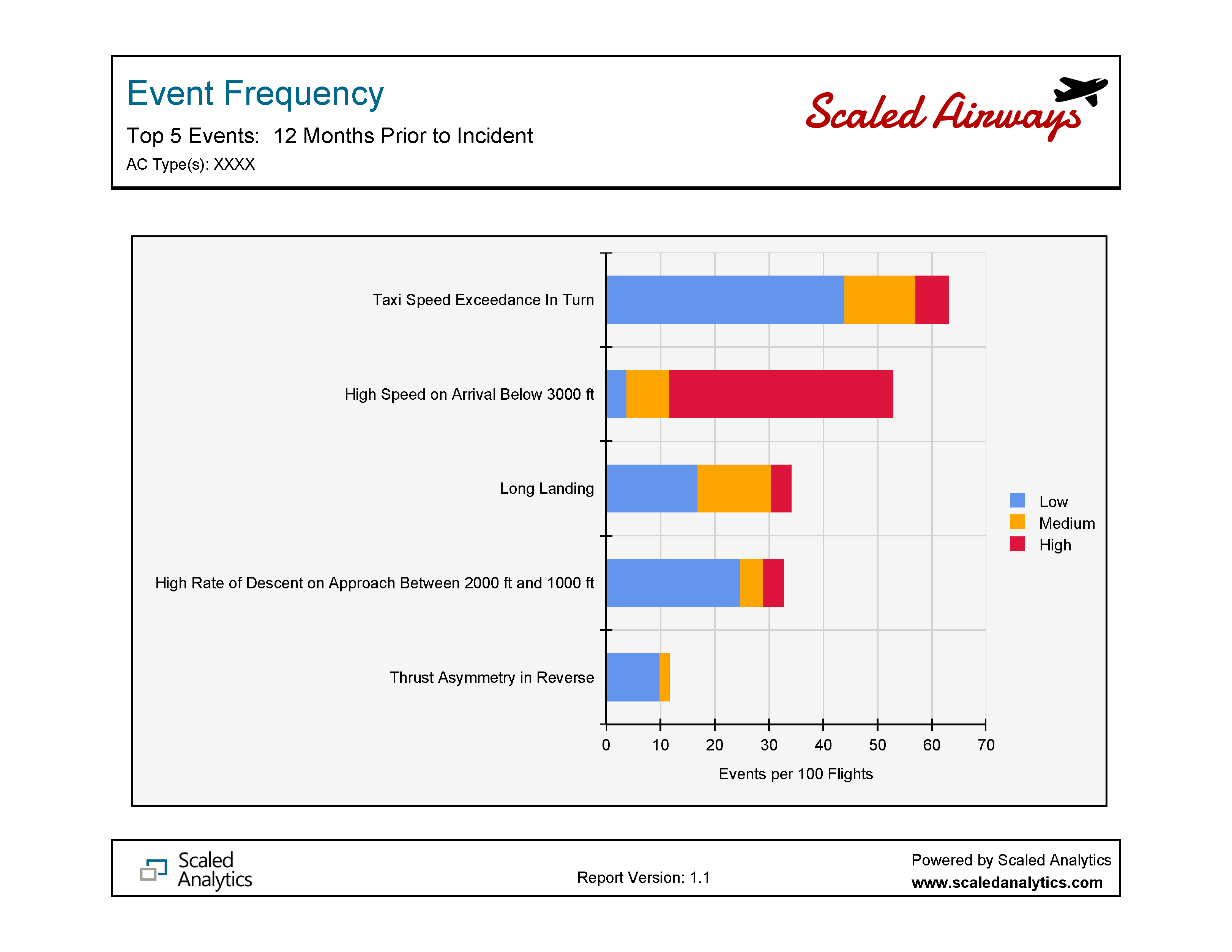(Note: This article was originally published on January 19, 2022).
I recently produced a report that illustrates how a Flight Data Monitoring program could have easily paid for itself by preventing a costly runway overrun. It is not a technical engineering report but rather a more casual, easy-reading look at how an FDM program could be used effectively and easily.
I am not going to repeat too much of what is in the report, but as I was writing it, I really did think about some of the attitudes towards Flight Data Monitoring and FOQA; particularly from those that have heard about it but have little or no experience running a program.
I have heard operators comment that they only have one aircraft so they are too small to benefit from FDM/FOQA (the operator in my case-study only had one aircraft and went out of business shortly after their runway overrun, so I would argue you are never too small).
I have also even heard the comment that FDM/FOQA systems are commodities now and they are all basically the same. I think that is about as accurate as the view that smartphones are now commodities.
While it is true that there is a VERY broad range in the quality and capabilities of FDM and FOQA systems on the market, to hear them referred to as commodities is a bit of a head-scratcher.
I think that one of the reasons for these view points is that there are those that see Flight Data Monitoring as yet another system that is being forced upon them, with little benefit. In their minds, it is just going to complicate things with no added benefit.
And in some cases, I can sympathize. There are numerous FDM software systems on the market that collect data and “spit out” reports. The problem is, few of them help the user with the next, and most important, step: understanding what to actually DO with that information.
I think (and this is just my theory) that many are somewhat intimidated by Flight Data Monitoring programs. Some in the industry make it sound like a complicated system in which you need to be an Aerospace Engineer or a “Data Scientist” to get anything useful out of it (trust me, you don’t).
You certainly CAN do some very complex analysis on the data and potentially uncover some quite interesting information, but you absolutely do not need to do complicated analysis in order to benefit from a Flight Data Monitoring program.
I like to use the analogy that Flight Data Monitoring is similar to a gym membership. Anyone can sign up for a gym membership and tell their friends about it on social media. But that alone is not going to get you in shape.
Now, if you are in relatively poor physical condition and you start going to the gym and using the equipment, you could see some very serious and significant improvements in your health fairly quickly.
If you are already in good physical shape, you may still see some gains as you start using the equipment, although your gains my not be as dramatic as someone that may had a little more “room for improvement” than you.
Or, perhaps you are an elite athlete and you depend on the gym equipment to help you extract every ounce of performance you can get to give you that competitive edge.
A Flight Data Monitoring program is very similar to that gym equipment. There are a number of safety gains to be made just by using the system. How large those gains are and where they are made depends on where you are starting from and what your goals are.
Unlike your health, though, you may not even know where you are starting in terms of safety until you actually start monitoring your flight data.
And here is a spoiler alert: just because you have never had an accident does not necessarily mean you are operating safely. Capt. Edward Smith apparently had an accident free career – right up until the point where he didn’t. Here is one of his more famous quotes:
“When anyone asks me how I can best describe my experiences of nearly forty years at sea, I merely say uneventful. I have never been in an accident of any sort worth speaking about….I never saw a wreck and have never been wrecked, nor was I ever in any predicament that threatened to end in disaster of any sort.” — Captain Edward Smith
If you have never heard of Capt. Edward Smith, he was the Captain of the RMS Titanic.
A Flight Data Monitoring program will pay for itself almost immediately by helping you make that initial safety assessment of your operation. From there, it is relatively easy to identify the major areas or “tallest nails” that need work.
Below is a chart from the report I referenced earlier that can help show how easy this could be.
This chart lists the Top 5 events for a particular operator. This is one of my least favorite FDM reports (for reasons I will not go into here), but it is a very basic, staple report. Think of it as FDM 101.

The items that jump out at me in this chart are the High Speed on Arrival events and the Long Landing events (I am not too worried about the Taxi Speed events at this point – one reason why this is not one of my favorite reports).
Despite how relatively simple this charts is, it suggests to us that we have a problem with unstable approaches and we need to do something about it soon (this operator did nothing and had a twin engine jet aircraft go off the end of the runway).
No complex analysis was required. More than half all flights, according to this chart, are approaching the airport fast and about a third are landing long. You do not need to be an Aerospace Engineer or a Data Scientist to understand a report like this.
Take that information and make whatever changes are required to nip this in the bud. Corrective actions include training, communication with the pilot group, review of SOPs or maybe just a review of arrival procedures at certain airports and consultation with the airport authorities.
You may need to do some digging to find out why you are having this problem before you can correct it, but at least now you know that you actually have a problem to solve. Before you would have been left in the dark until it was too late.
A reputable FDM system will provide the tools to let you dig into the data as deep as you need to, but this does not have to get overly complicated. Referring to the gym membership analogy, this operator is “out of shape” and a few small changes would make a huge difference.
Once you have taken care of some of the “taller nails” such as this one, you can relax a little and look at some less urgent areas to work on as part of your continual improvement process. And if there are none, then that’s fine too. Keep doing what you are doing to keep your risk down. If anything does start to slip, it will likely be reflected in the data so you can take care of it before it becomes a bigger problem.
If and when you reach the point that there are few changes to make, you can start to think of your organization as that elite athlete at the gym; fine-tuning and tweaking to squeeze out as much performance as possible while remaining in top shape.
With Flight Data Monitoring and FOQA, that equates to safer operations, improved efficiency and reduced costs.

Let’s keep in touch
Sign up to get notified of new blog posts, videos or other news and information related to flight data.



